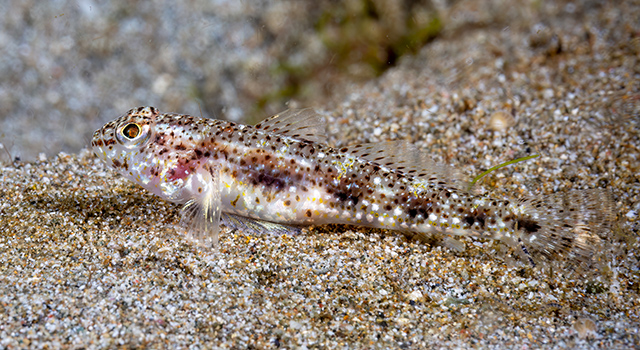| Gobiidae (Gobies), subfamily: Gobiinae |
| 2.86 cm SL (male/unsexed) |
|
demersal; marine |
| Western Pacific: Papua New Guinea, Solomon Islands, the Philippines and Indonesia. |
|
This species is distinguished by the following characters: third dorsal spine longest, segmented dorsal and anal rays usually 10 (sometimes 9), pectoral rays 16-18 (rarely 16); branched caudal-fin rays 12-13 (usually 12); lateral scales 24-26 (rarely 24); transverse scales 7; predorsal scales 6-8 (usually 7); ctenoid scales covering body and nape, except cycloid on prepelvic area, pectoral-fin base, and most of cheek; head is completely scaled, ctenoid scales on opercle and posterior cheek; 'mixed' pattern of cephalic sensory papillae including two primary longitudinal rows and several transverse rows. Colouration: in life it is generally tan to whitish ventrally with 5-6 diffuse brown saddles dorsally on head and body, five large rectangular, dark-brown spots midlaterally on side of body, and numerous smaller dark-brown and white spots on dorsal half of the head and body (Ref. 125639). |
| Found on sand-bottom habitats (Ref. 125639). |
|
Not Evaluated (N.E.) Ref. (130435)
|
| harmless |
|
Source and more info: www.fishbase.org. For personal, classroom, and other internal use only. Not for publication.

